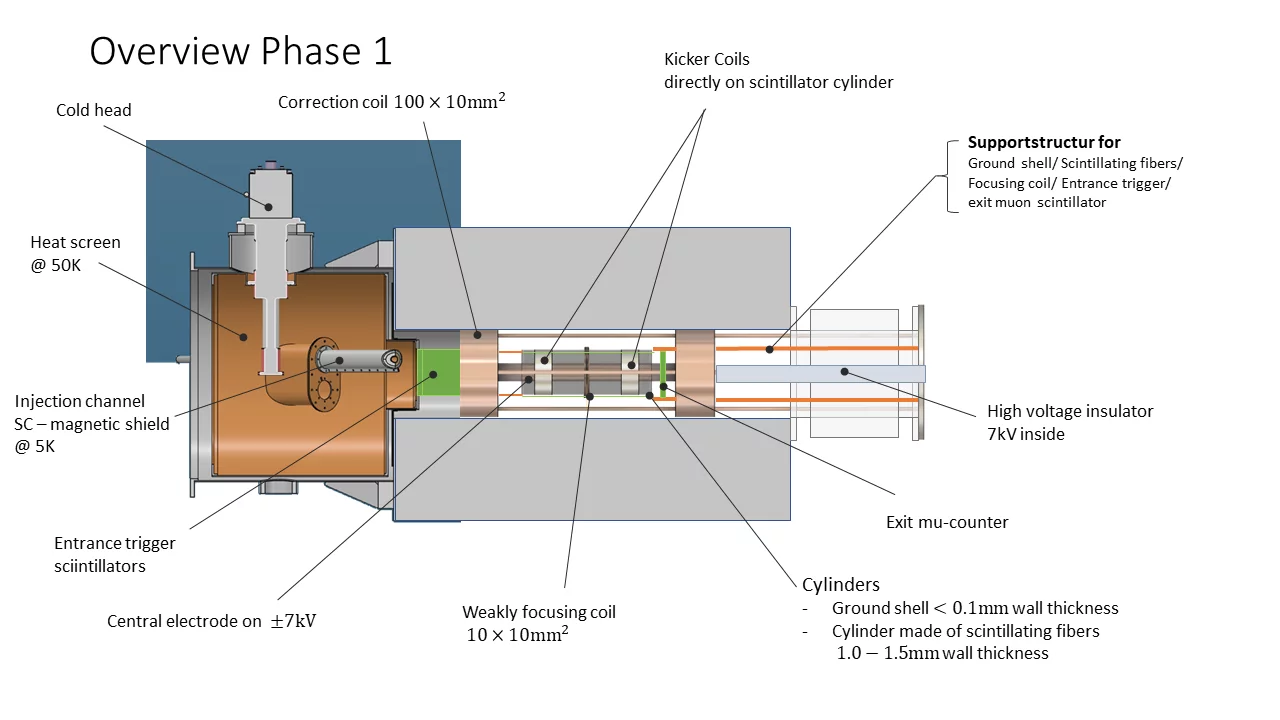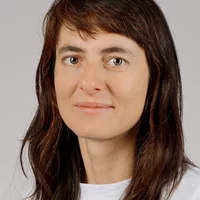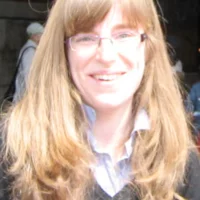Current news
September 2023
New PhD student David Höhl, joins PSI muEDM group. Welcome David!
Overview
Open Motivation configuration options
Motivation
The presence of a non-zero electric dipole moment of the muon at current experimental sensitivities indicates Charge-Parity (CP) symmetry violation beyond the Standard Model of particle physics and could help to explain remaining open questions in the understanding of our Universum. The theoretical limit set by the Standard Model is extremely small ($\sim 10^{-38}e{\rm cm}$) and is beyond the reach of current experiments. The most stringent experimental limit comes from the Muon g-2 Experiment (E-821) at Brookhaven National Lab and is of order $\sim 10^{-19}e{\rm cm}$. The PSI muEDM experiment aims to achieve a target sensitivity of $\sim 6\times 10^{-23}e{\rm cm}$ which would improves the experimental limit on muon EDM by more than 3 orders of magnitude. An observation of non-zero muEDM at this sensitivity will be a direct hint of CP violation beyond the Standard Model. The experiment will achieve its target sensitivity by implementing the Frozen-Spin technique.
Frozen-Spin method
Charged leptons undergoing cyclotron motion in presence of an external magnetic field, the spin precession frequency exceeds the cyclotron frequency by an amount given by the anomalous magnetic moment. In the Frozen-Spin method, this anomalous spin precession frequency, also called the g-2 frequency will be suppressed by the application of a radial electric field. As a result, the only contribution to the anomalous spin precession will come from the electric dipole moment of the muon and will manifest in the form of longitudinal asymmetry in the distribution of the decay positrons.
Experimental Setup
The PSI muon EDM experiment consists of two phases: the precursor experiment and phase two. In the precursor experiment, we will utilize 28 MeV/c surface muons injected into a 1 m long solenoid with a 0.2 m inner diameter. The key goal is to demonstrate the functionality of critical components and successfully apply the frozen-spin technique for the first time.
In this phase, highly polarized muons from pion decay at rest will be injected off-axis into the 3 T solenoid. Achieving this will involve using a collimation tube within a superconducting magnetic shield. Correction coils will be employed to reduce the field gradient during injection. At the end of the injection channel, an entrance detector with scintillating tiles will select muons within the acceptance phase space and produce a trigger signal in anti-coincidence fashion, generating a magnetic kick within the solenoid's center. This kick will turn the longitudinal muon momentum into the transverse plane, facilitating storage within the weakly-focusing field created by a dedicated coil. To establish the frozen-spin condition, a radial electric field will be applied between coaxial electrodes. The electric field's magnitude will be determined by measuring the muon's anomalous spin precession frequency, $\omega_a$, as a function of the electric field, followed by interpolation to nullify $\omega_a$. Once the frozen-spin condition is confirmed, we'll detect the longitudinal asymmetry in the decay positrons to search for an EDM signal.
In phase two, 125 MeV/c muons will be injected into a magnet with a larger bore, due to the higher momentum and a higher muon flux we expect a further increase in sensitivity to finally $6\times10^{-23}\,e{\rm cm}$.
The Collaboration
Paul Scherrer Institute
Postdocs
PhD Students
University of Pisa
Shanghai Jiao Tong University
Kim Siang Khaw








